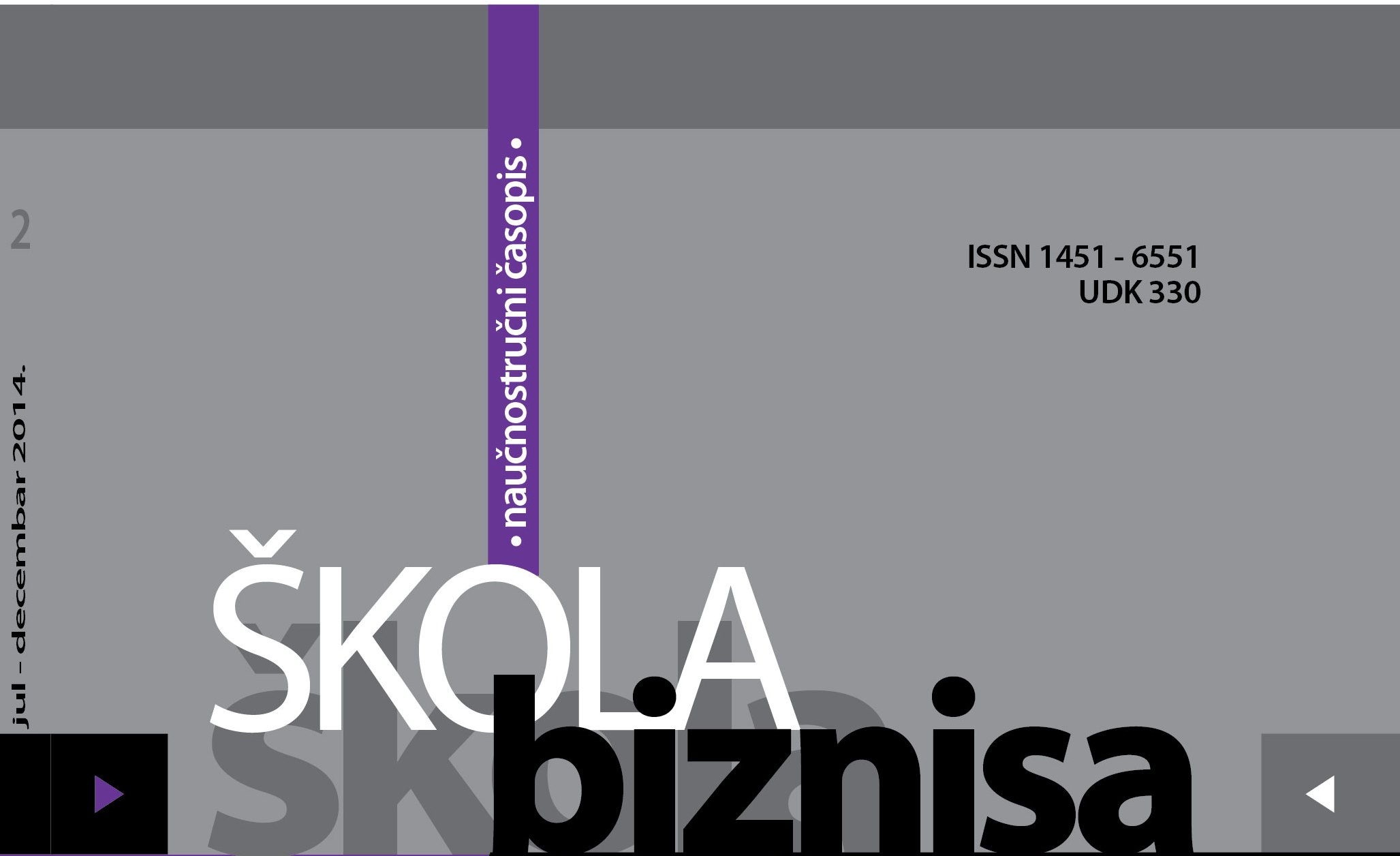THE SIGNIFICANCE AND EXPORT POTENTIAL OF SERBIAN ECONOMY WITH SPECIAL REFERENCE TO CONDITION OF LIVESTOCK
Abstract
With respect to the availability of significant human and natural resources, as well as the achieved level of production and processing, agriculture is the key economic activity of the Republic of Serbia. However, as a result of the transition process, the agriculture of the Republic of Serbia operates in extremely unstable, unpredictable and unfavorable conditions. It is therefore characterized by an unchanged production structure, primarily in capital-intensive production. Animal Husbandry in Serbia, together with farming, represents an essential branch of the agriculture. Serbian livestock occupies an important place in the national economy because it creates a greatvalue-added by engaging natural and human resources. Although this activity has a chance to grow into a significant agricultural industry, the volume of livestock during the last two decades has been constantly decreasing in the amount of 2-3% per annum. The aim of the research is to examine the causes of the reduced share of national agriculture and livestock in the gross domestic product (GDP) of the country, as well as the cause of the tendency of gradual and persistent reduction and livestock crisis. Data from the paper, for the most part, are based on the Agricultural Census 2012. It should be noted that, due to different definition concepts, data obtained by the latest Census of Agriculture are not fully comparable with the data obtained in the former regular statistical surveys. Census of family farms and farms of entrepreneurs was conducted through interviews. The study also applied statistical analysis methods of current and interval time series data, as well as the method of the considered variables comparison. This paper, first, discusses the importance of agriculture and its foreign trade position in the Serbian national economy. Furthermore, attention is paid to the current state of the domestic livestock and its geographical distribution by statistically defined regions of the Republic of Serbia, whereby the changes of domestic livestock within a period of 18 years are tracked through comparative analysis. Because of the fact that the import of the agricultural products is growing faster than exports, the results indicate that the Republic of Serbia is gradually transformed into a country depending on imports of agricultural products, livestock, meat and dairy products. Extremely unfavorable agricultural policy measures of the Republic of Serbia add to this conclusion.
References
Aleksić, S., Pantelić, V., & Radović, Č. (2009). Livestock Production – Present Situation and Future Development Directions in Republic of Serbia. Biotechnology in Animal Husbandry, 25(5–6), 267–276.
Food and Agriculture Organization. (2014). FAOSTAT Country Profiles – Economic Indicators for Serbia. Preuzeto sa http://faostat.fao.org/CountryProfiles/Country_Profile/Direct.aspx?lang=en&area=272, 2014 Oct 30.
Gulan, B. (2013). Agrar Srbije u susret evropskim integracijama i agrarnoj politici. Preuzeto sa http://www.makroekonomija.org/poljoprivreda/agrar-srbije-u-susret-evropskim-integracijama-i-agrarnoj-politici, 2014 Oct 30.
Gulan, B. (2013). Kako pomoći farmerima. Novi korak, 79(13), 16–17.
Privredna komora Srbije. (2013). Statistika poljoprivrede, prehrambene i duvanske industrije i vodoprivrede. Preuzeto sa http://www.pks.rs/PrivredaSrbije.aspx?id=13&p=2&, 2014 Nov 6.
Republički zavod za statistiku. (2013). Census of Agriculture 2012 – Agriculture in the Republic of Serbia, Book I.
Republički zavod za statistiku. (2013). Census of Agriculture 2012 – Agriculture in the Republic of Serbia, Book II.
Republički zavod za statistiku. (2012). Popis poljoprivrede 2012. godine u Republici Srbiji – konačni rezultati. Preuzeto sa http://webrzs.stat.gov.rs/WebSite/public/PublicationView.aspx?pKey=41&pLevel=1&pubType=2&pubKey=2106, 2014 Oct 30.
Stošić, M., & Lazarević, D. (2009). Country Pasture/Forage Resource Profiles – Republic of Serbia. (str. 14–15). Rome: Food and Agriculture Organization.
Strategija poljoprivrede i ruralnog razvoja Republike Srbije za period 2014–2024. godine. Službeni glasnik Republike Srbije, (2014). 85.
Vasiljević, Z. (2007). Osnovni pravci reforme agrarne politike u Srbiji. U: B. Cerović (Ur.), Naučna konferencija – Izazovi ekonomske politike Srbije u 2007. godini. Beograd: Naučno društvo ekonomista sa AEN i Ekonomski fakultet u Beogradu. 203-214.
Veselinović, P. (2014). Izvozni potencijal privrede Srbije u novim globalnim uslovima. U M. Kovačević & V. Grečić (Ur.), Stanje i perspektive – Ekonomsko-finansijski odnosi Srbije sa inostranstvom (str. 63–82). Beograd: Naučno društvo ekonomista Srbije sa Akademijom ekonomskih nauka i Ekonomski fakultet u Beogradu.
Vlada Republike Srbije. Činjenice o Srbiji – poljoprivreda. Zvanični veb-sajt Vlade Republike Srbije. Preuzeto sa http://www.arhiva.srbija.gov.rs/cms/view.php?id=1024, 2014 Oct 30.
- Authors retain copyright and grant the journal right of first publication with the work simultaneously licensed under a Creative Commons Attribution License that allows others to share the work with an acknowledgement of the work's authorship and initial publication in this journal.
- Authors are able to enter into separate, additional contractual arrangements for the non-exclusive distribution of the journal's published version of the work (e.g., post it to an institutional repository or publish it in a book), with an acknowledgement of its initial publication in this journal.
- Authors are permitted and encouraged to post their work online (e.g., in institutional repositories or on their website) prior to and during the submission process, as it can lead to productive exchanges, as well as earlier and greater citation of published work (See The Effect of Open Access).

